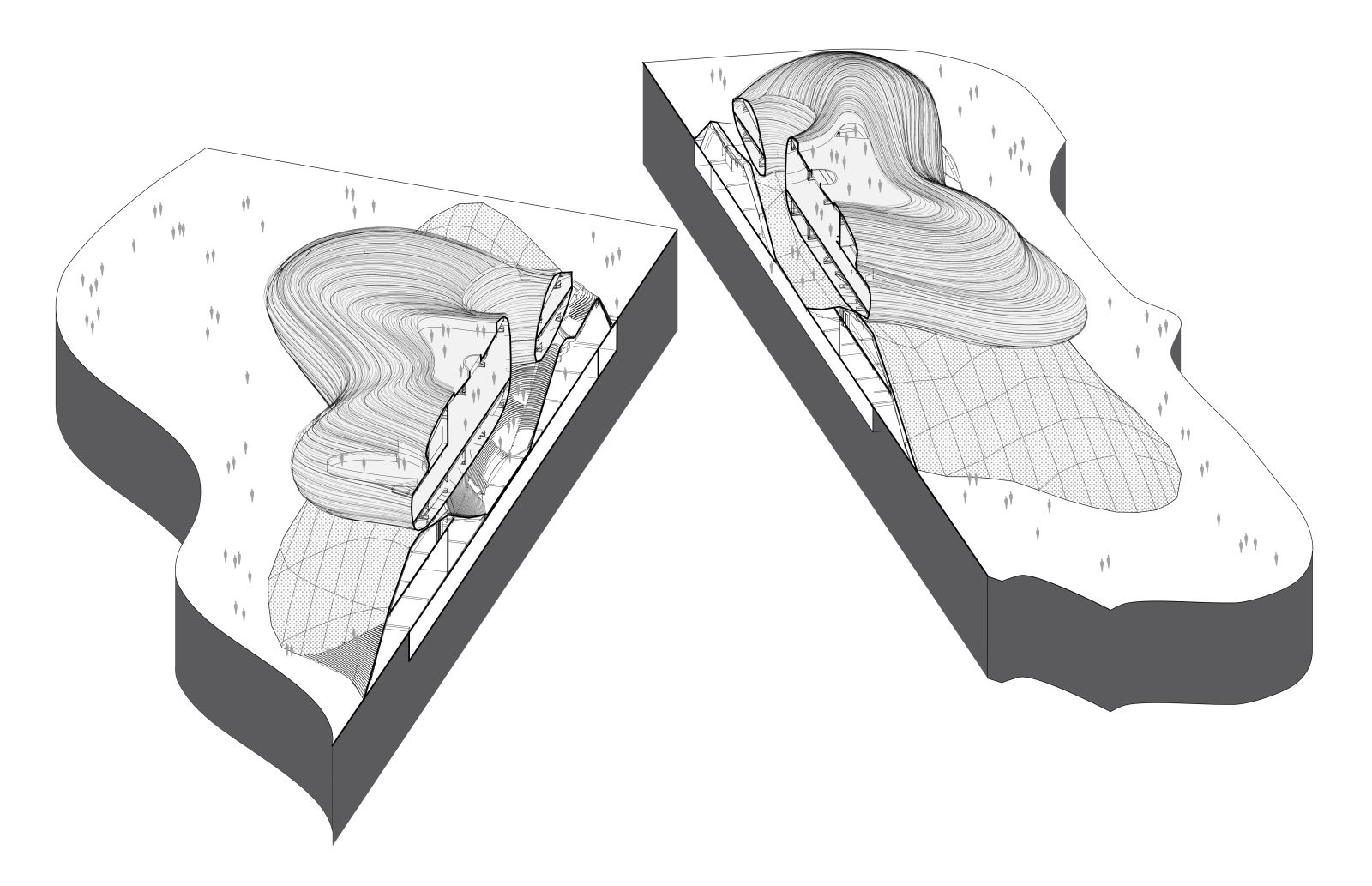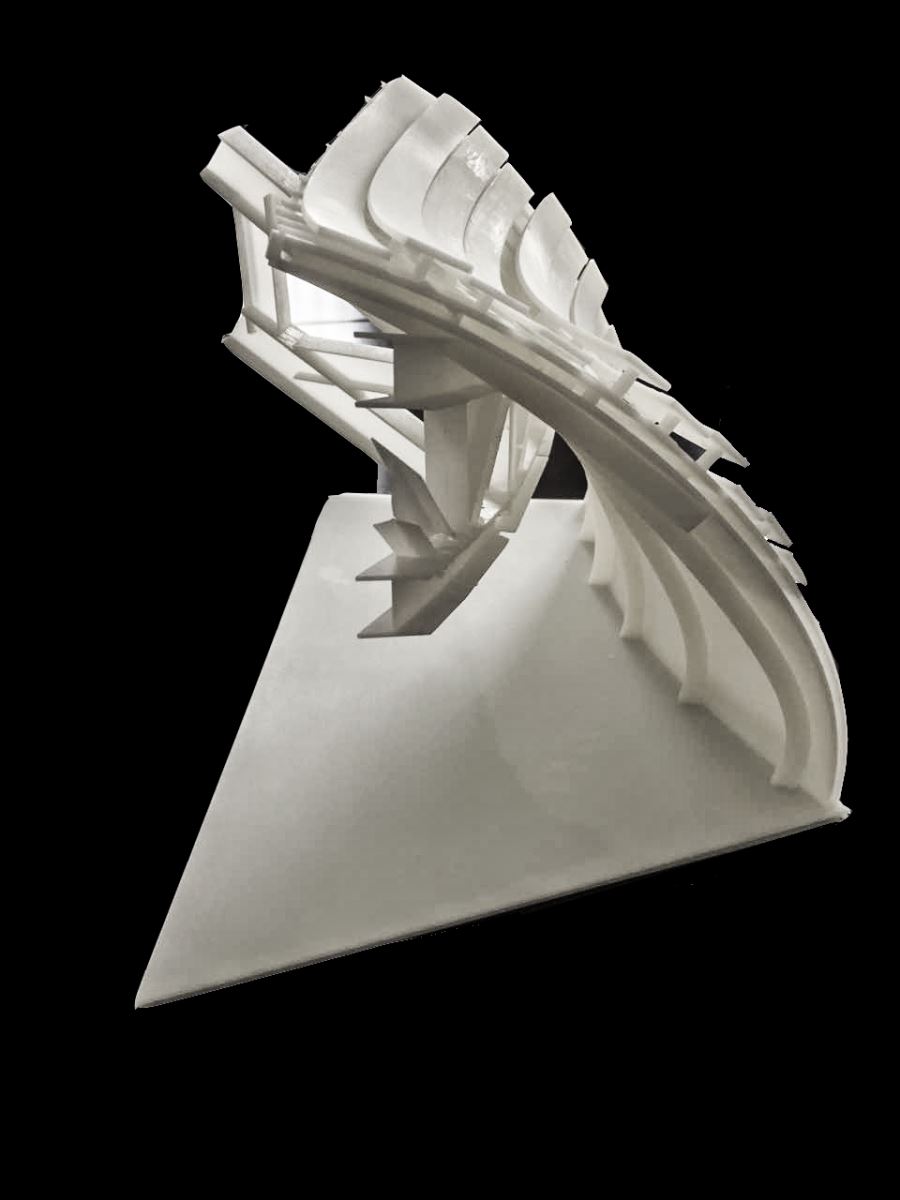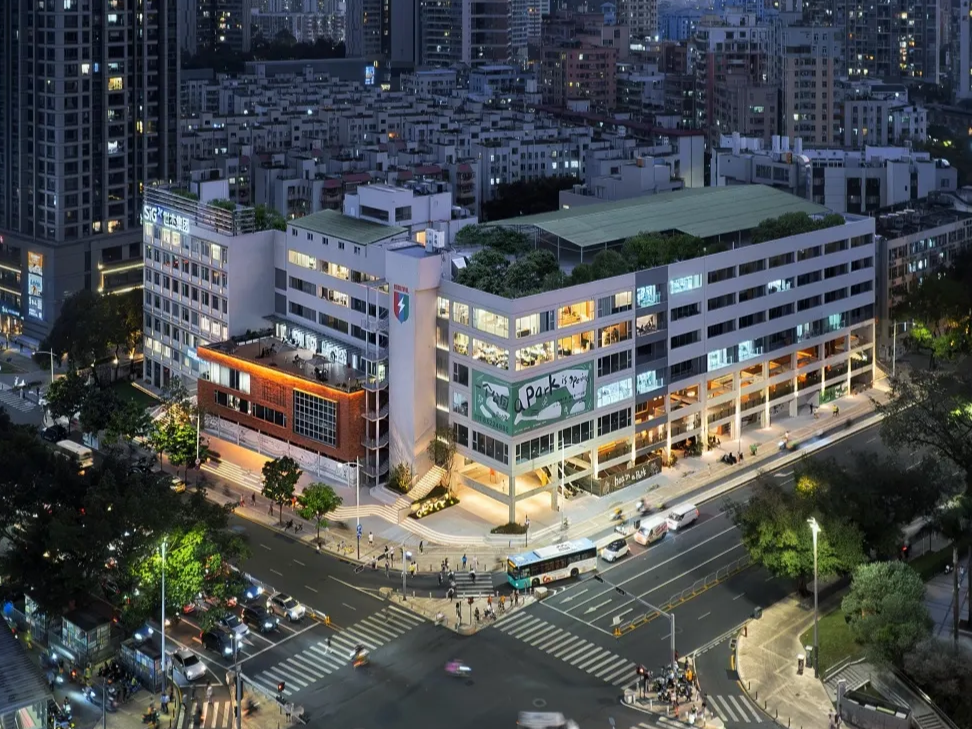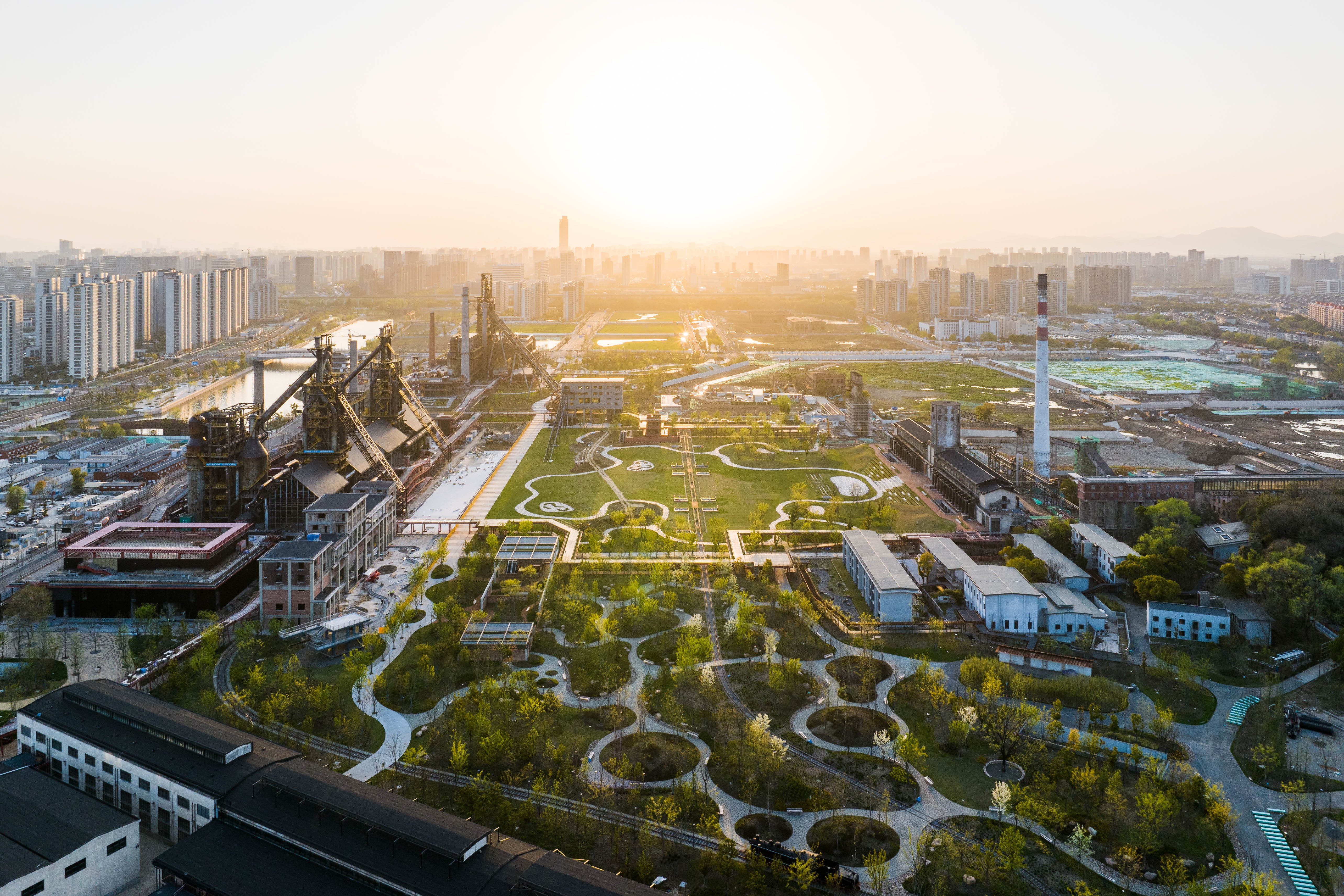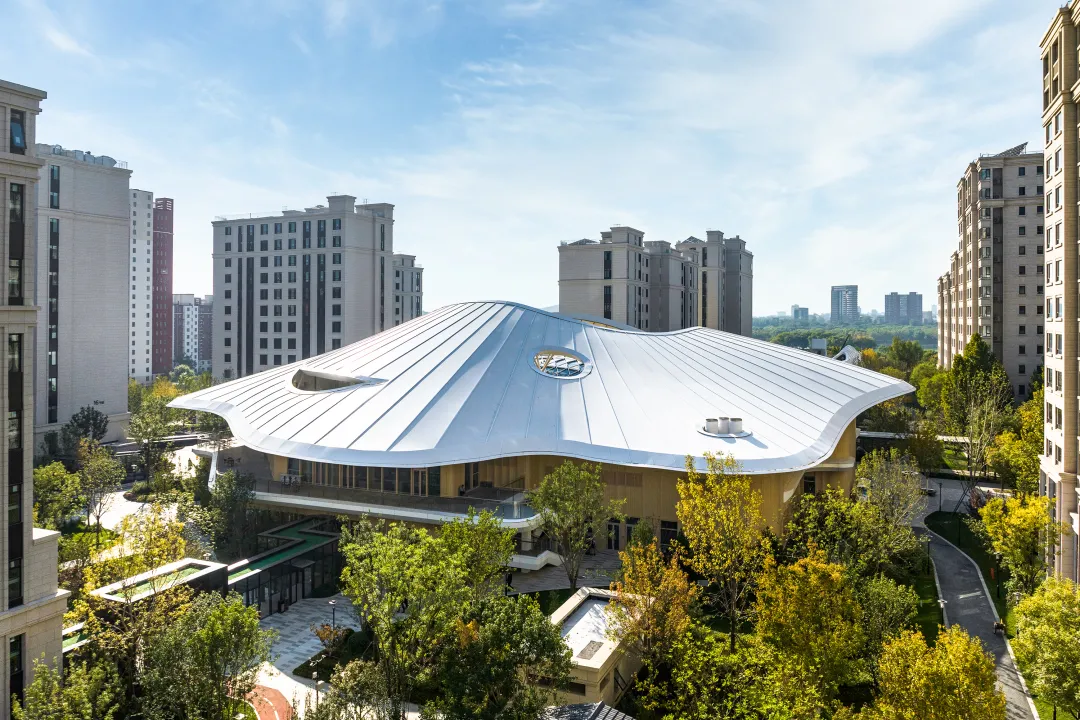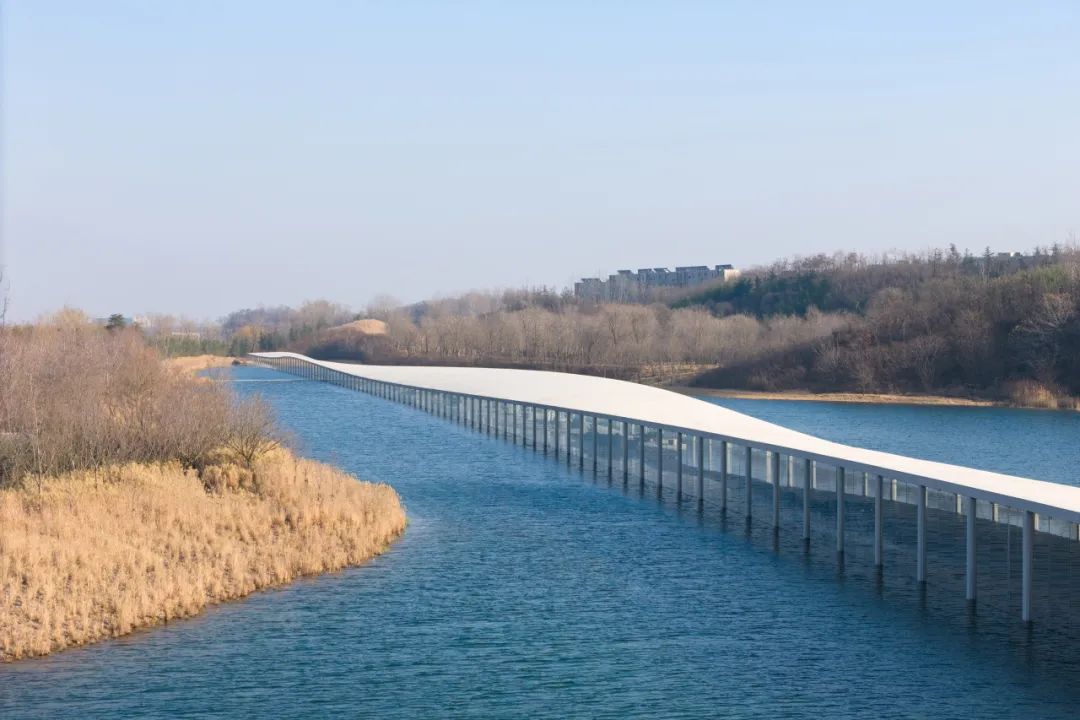溧阳博物馆
悬歌—溧阳博物馆
Floating Melodies—Liyang Museum
《后汉书•蔡邕传》:"吴人有烧桐以爨者,邕闻火烈之声。知其良木,因请而裁为琴,果有美音,而其尾犹焦,故时人名曰焦尾琴焉。
溧阳博物馆位于城市新区燕湖公园西南角 ,作为城市地标性的公共建筑, 介于湖水与城市之间,博物馆的设计灵感取自出自溧阳的"焦尾琴",建筑师林琮然重构了形式上的象征感,试图在多面向的空间中融入典故的寓意,让建筑和自然与城市发生联系,创造出有机的型态与起伏的山体,营造一种开放自由的氛围,自然而然形成东方的山水诗意。谱写出一段悠扬在山林间的千古悬歌,自然而然形成一种藏巧于拙的意趣。
Liyang Museum is located in the southeast corner of Yan Lake Park in the new urban district, connecting an urban public space to the new nature. The organic lines and undulating mountains compose melodious music in the mountain forest. An Open Attitude welcomes people from all directions. The perfect combination of terrain tells about landscape culture and creates an oriental poetic life.
The chinese instrument, Jiaoweiqin, is one of Liyang's cultural symbols.that's the origin to build the city temperament. The architect C.R. Lin created the concept in the background of this story and transformed from historical antiquity into architectural form.

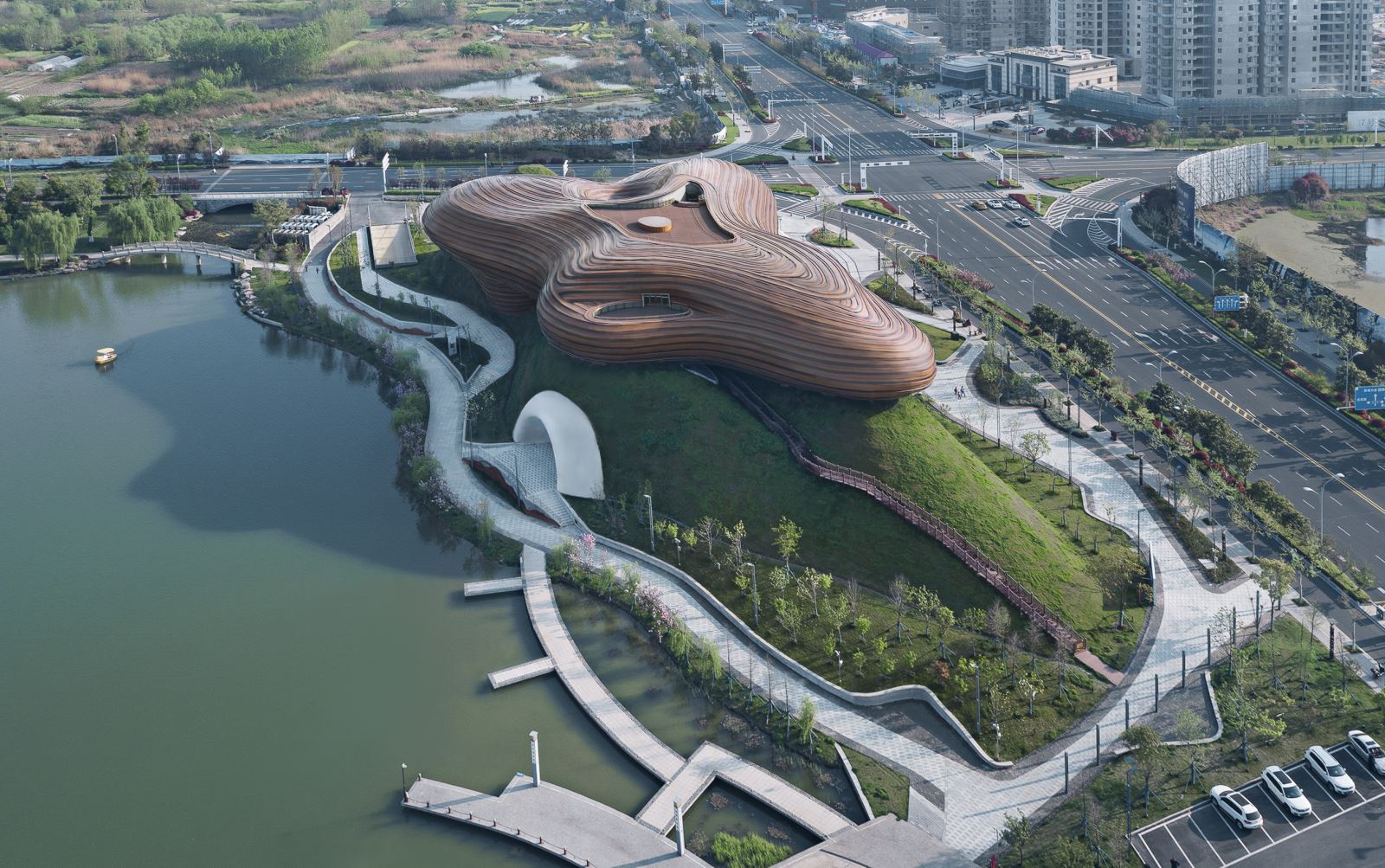
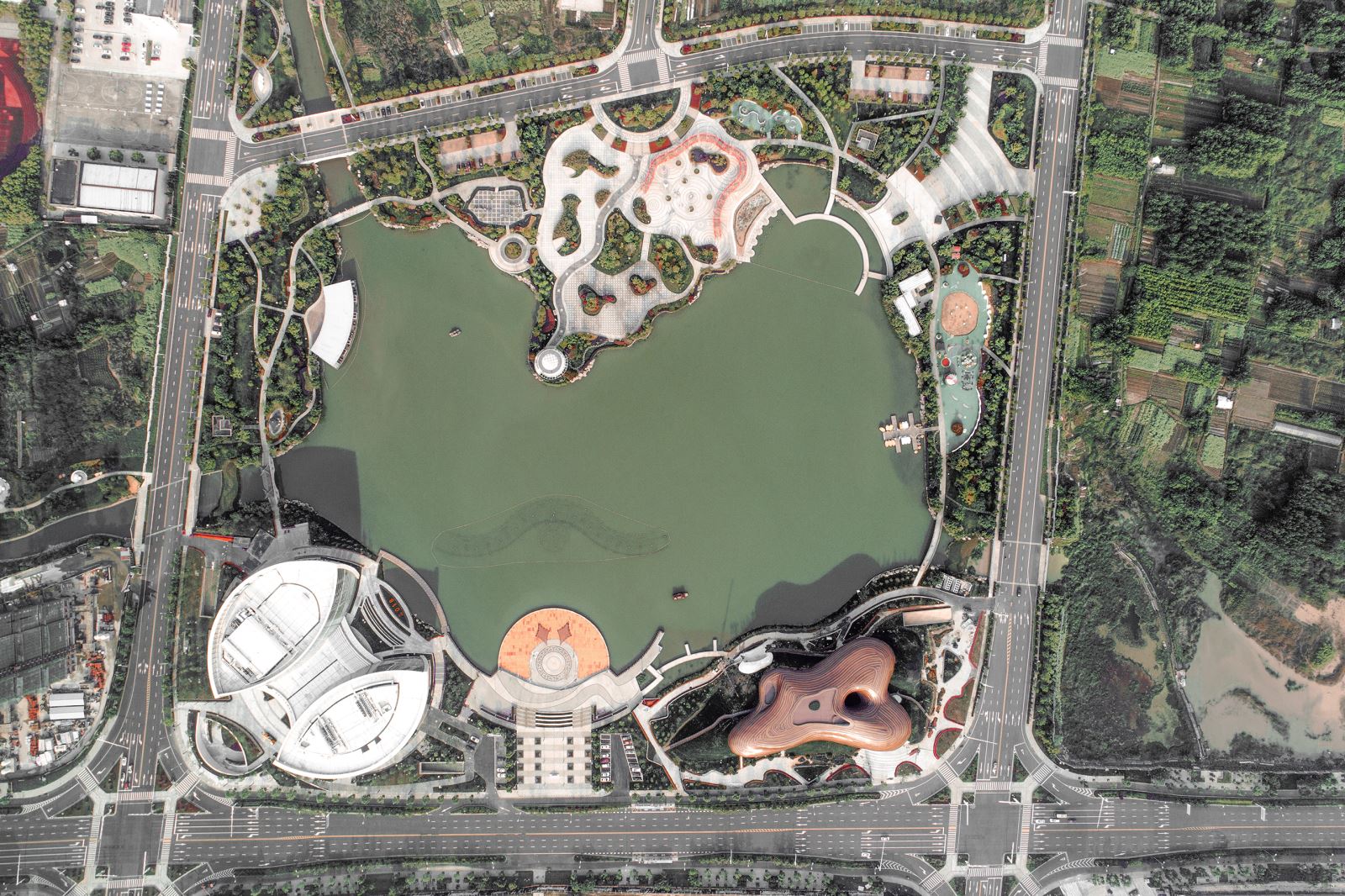
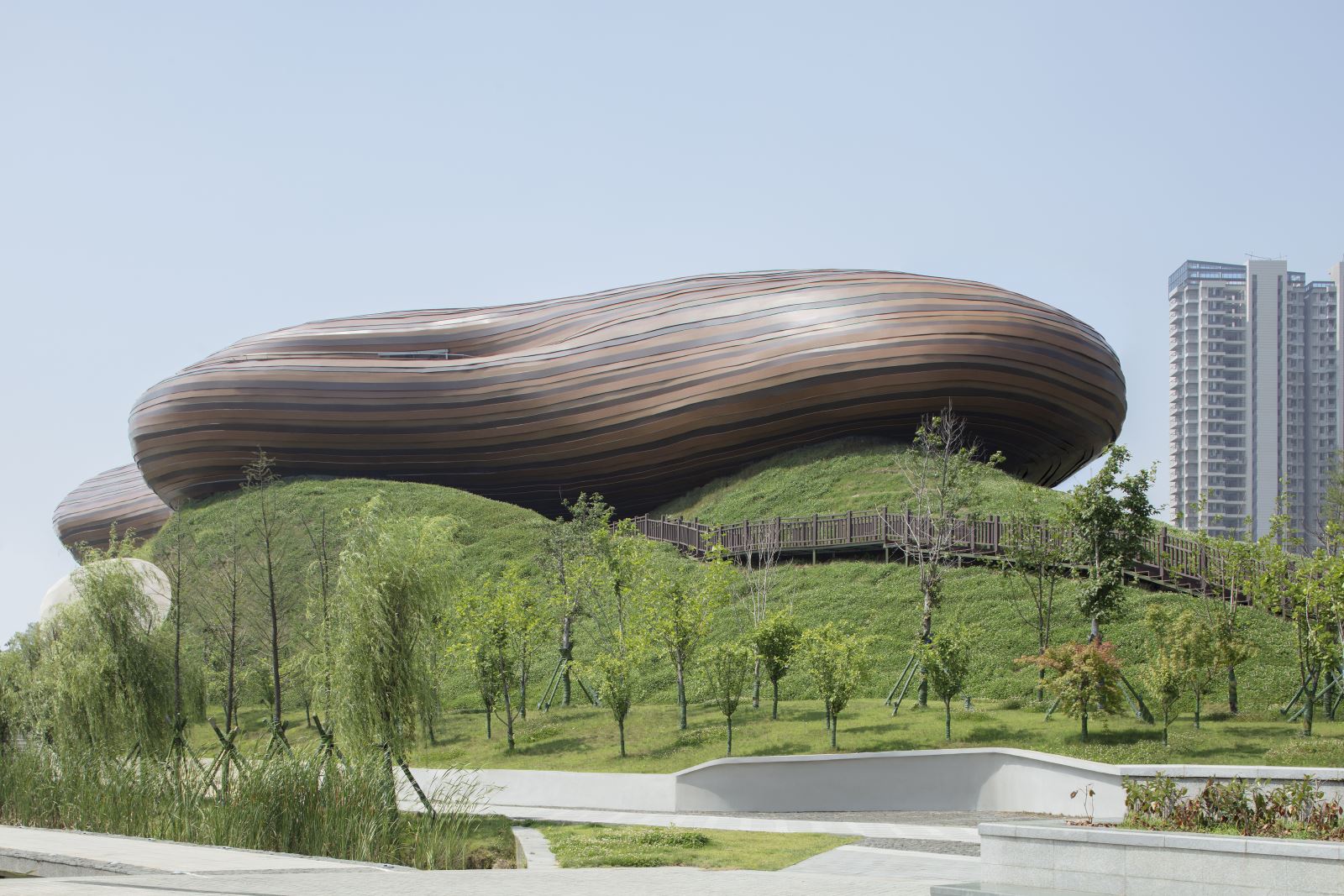
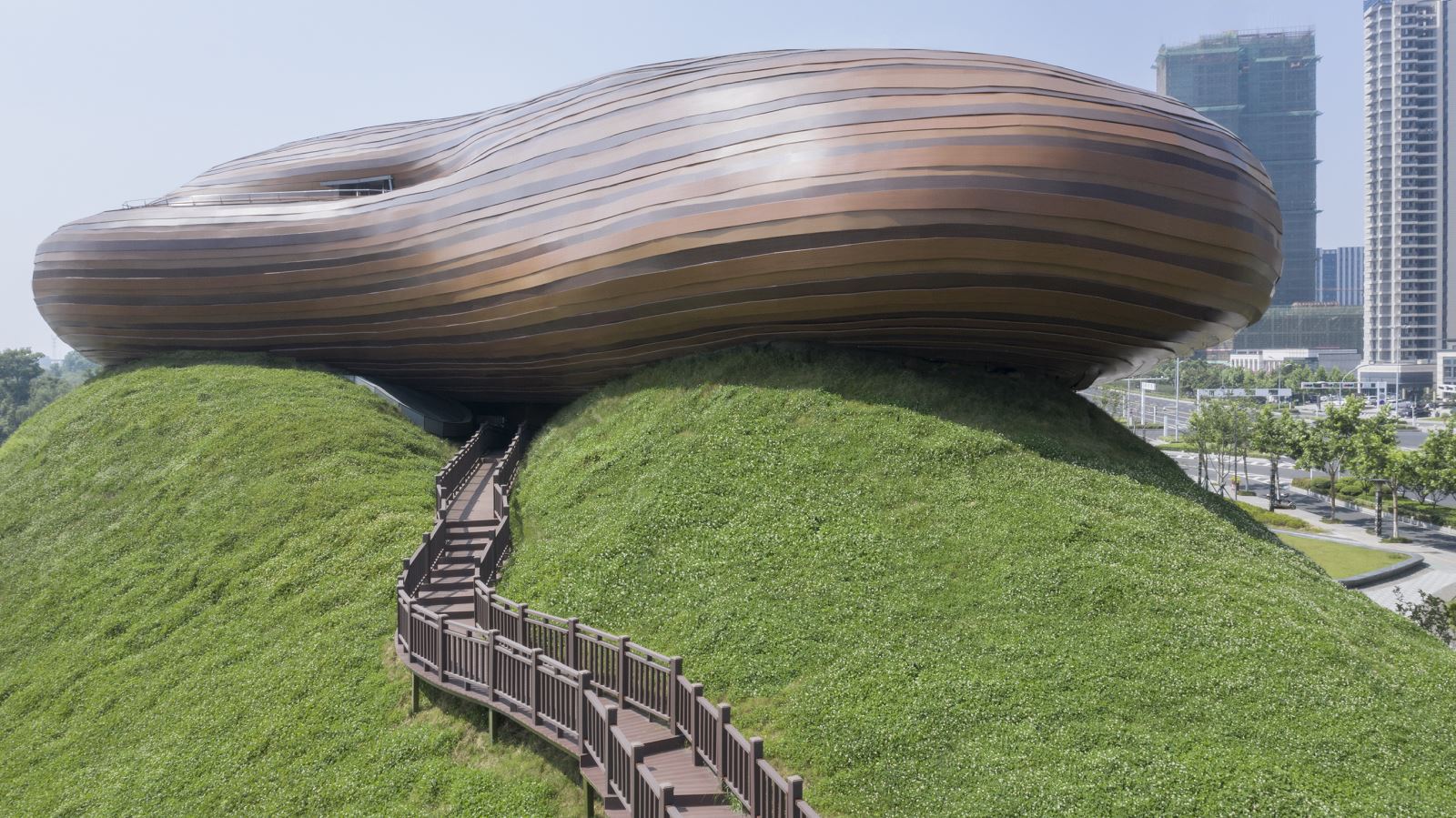
场所精神
博物馆以悬歌为概念,建筑分为上下两个量体,下部与城市公园融合形成了山体,作为博物馆功能;上部与天呼应形成如云朵般的流体,作为城市规划馆功能。两个体量间创造出属于市民的活动空间,特殊的功能将过去、现在与未来凝聚成一种特殊的场所精神。漂浮的上部建筑中挖空的水滴形天井,与上方的屋顶平台呼应,形成上下交流的机遇,构成城市额外的空间礼物,人们可以在此处感受阳光、空气、植物与水,创造出一个与自然共鸣的机会。建筑本身的多样性、独特性和连续性,在人、地点、时间、历史的维度上,积极维持着与本源文化的关联,凝聚成为城市居民永远的财富,描绘了中国当代都市的发展趋势和一个充满希望的机遇。
According to a book of the Later Han dynasty: the story of Yong Cai writes—a man was burning paulownias to make dinner. Yong Cai passed by and heard wood cracking in the fire.He immediately understood it was a nice piece of wood and explained it to that man. He took out the wood from the fire and made a musical instrument by using it. People were amazed by the beautiful sound of the instrument. The end of the wood was burned so it was called "Jiaoweiqin".
From an oriental point of view, architecture is seen as a part of the nature whole which contains both inner and outer space; a space that connects human, earth and universe. The team has considered the relationship between melody and nature, human and architecture interaction, delivering a poetic visualization process of culture and life senses. Design concept contains: KEJING (visualize & scenarize), XUANGE (hang & sing), LIUZHUANG (flow), it helps to creates discussion of what is essential space and what is oriental architecture.
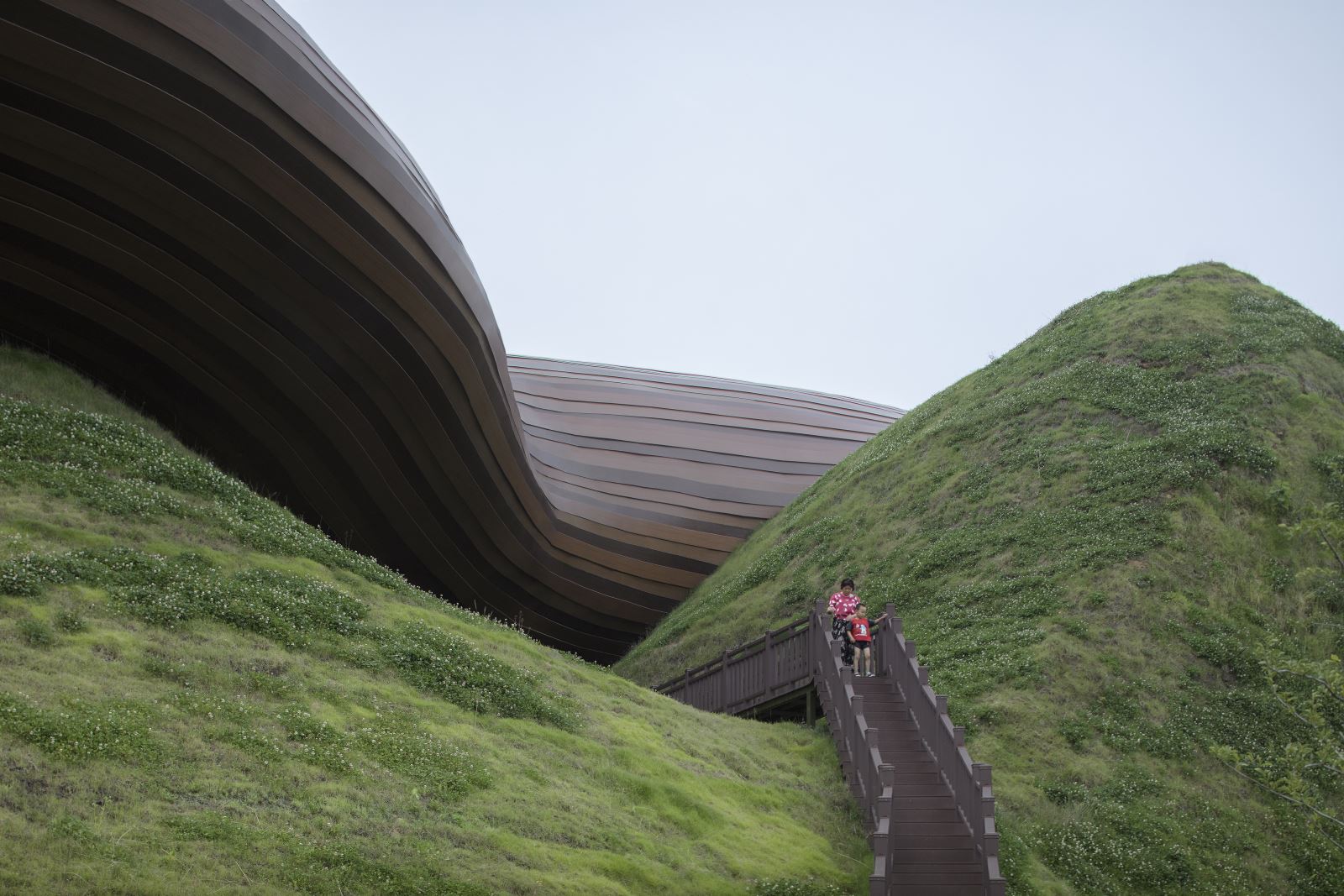
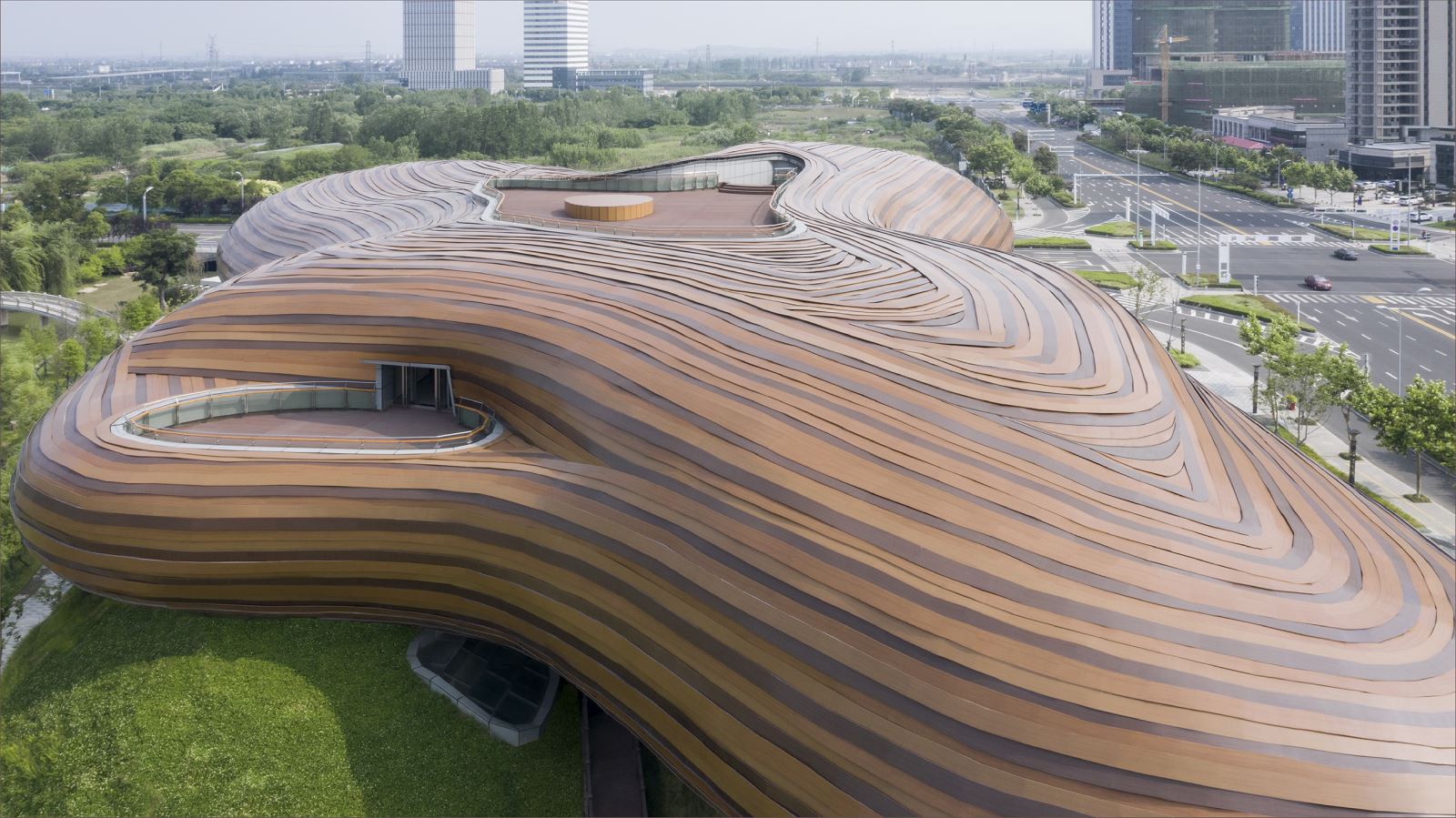
结构材料
建筑上下为两种结构系统的融合, 下部为钢筋混泥土构建,上部为钢构建的悬挑结构,两种构建可以用更经济的方式实现项目几何的复杂性,并满足表面的施工需求,材料分为两种系统,上部规划馆部分的建筑外表皮采用的是直立锁边铝板幕墙,选择了混合木头色,设计预留表皮有着凹凸面,在每个时刻的光线下都呈现出不同的色泽和表达,希望谱绘出朴实无华的质感。设计预留表皮有不规则的缝隙,夜间可以透光,闪烁如古琴乐声萦绕般的光束在建筑间变化,像火光般的幻化。下部博物馆部分,在外侧受光处种植了冬草和夏草,在内侧种植了耐阴植物肾蕨和麦冬,肾蕨冬季常绿,而麦冬会开出紫色的花,融入浪漫的人文想象,更重要的是生态的表皮大大减少了碳排放,造成室内冬暖夏凉的效果,上下整体建筑的外表皮就是由木头、植物色组成,融入城市地景,在不同时节会形成别具特色的风貌。
Liyang Museum's top part is a floating architecture. It feels like poetry, smooth and thoughtful. Its hollowed body contains "present, past and future" exhibition halls. Its location beside a lake provides multiple access and crossing views, referring to the theory of architecture scholar Colin Rowe's. Liyang Museum's design emphasizes in buildings accessibility and combination of multiple concepts.

